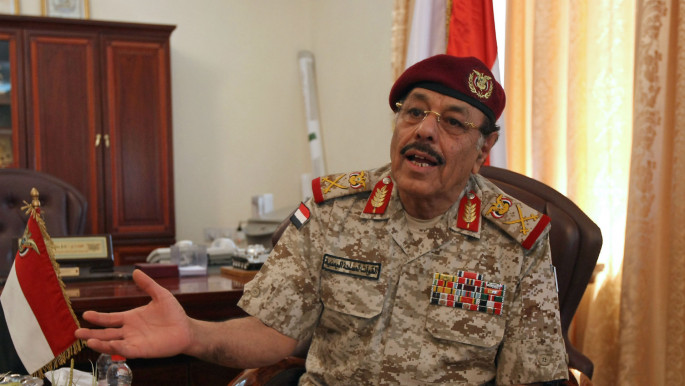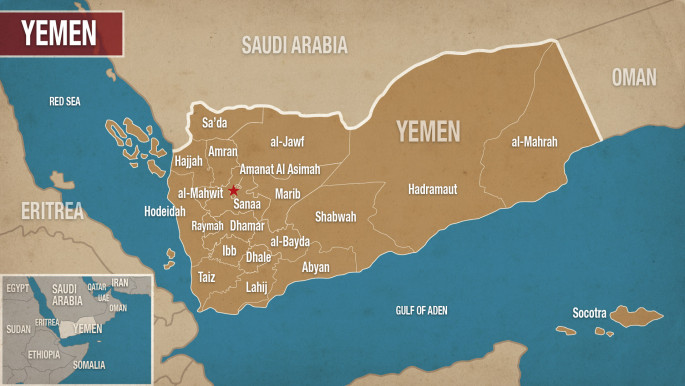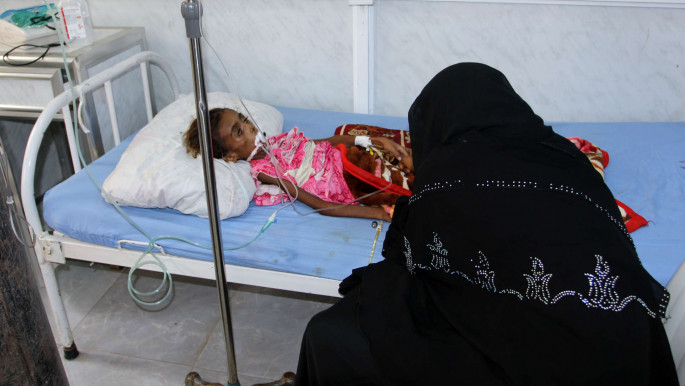
How Saudi Arabia miscalculated its war in Yemen
In March 2015, Saudi Arabia and several other Arab states, launched Operation Decisive Storm against a Yemen-based militia led by the Houthi clan.
The Houthi group, which Saudi Arabia accused of being an Iranian proxy, is a minority that belongs to the Zaydi doctrine of the Shia theology of Islam. Despite various indications the Houthis are neither a total Iranian proxy, nor share strategic interest with Iran's other proxy groups in Lebanon, such as Hizballah or the Popular Mobilisation Force (PMF) in Iraq, Saudi Arabia began its military intervention disregarding the facts.
Riyadh also formed an alliance with Yemen's President Abdo Rabbu Mansour Hadi, who was elected in an uncontested election in 2012, and later with former Yemen army Brigadier Ali Mohsin Al-Ahmar - neither of whom appear capable of rallying the Yemeni people behind them to balance power against the Houthis. Yemen's former President Ali Abdallah Saleh later sided with the Houthi group.
 |
Yemen is known as a 'Graveyard for Invaders' |  |
With impalpable progress and staggering humanitarian crisis, Hadi's internationally recognised government continues to lose power by the day. Therefore, Saudi Arabia should correct its course by withdrawing from Yemen militarily while maintaining humanitarian aid. It should avoid shifting alliance towards the secessionist forces, like Hirak al-Junub in South Yemen, because such a move will diminish any prospect of ending the war.
The hoax of an Iranian proxy
Saudi Arabia's main pretext for its intervention was that the Houthis were an Iranian proxy group. It views Iran as its strategic competitor and fears greater Iranian influence in its backyard: Yemen. But its assumption about the Houthis is ill-informed.
In Yemen, the small minority to which the Houthis theologically belong are the Zaydis. Zaydism is a small branch of Shia theology that fundamentally shares many similarities with the Sunni doctrine of Islam.
Nevertheless, there are two major disincentives that prevent Iran from realistically establishing a deep bond, let alone using the Houthis as a puppet. The first is theological and tribal, and the second is geographical.
Saudi Arabia and the proponents of its intervention often proclaim a collusion between the Houthis and Iran, without presenting solid evidence, not based on unsubstantiated assumptions. But the available facts argue that Houthis' relationship with Iran is often inflated.
Consider the life of Hussein Bedre Eddin al-Houthi, the late older brother and predecessor of Abdul-Malek Bedre Eddin al-Houthi, the spiritual leader of the Houthi group. Hussein al-Houthi was the founder of the Believing Youth movement in the early 1990s. It was the progenitor of Ansar Allah, later named the Houthi group.
 |
|
| [Click to enlarge] Hussein al-Houthi [Wikimedia] |
He was elected a member the Yemeni parliament in 1994 and represented the Al-Haqq Islamic Party, a political movement that embodied both Zaydi and Shafi'i (Sunni) MPs.
Four years later, he quit his job and went to Sudan to "pursue a degree in Quranic Studies". If Hussein al-Houthi indeed shared doctrine with Iran, did he not have the choice to go to Tehran for religious studies rather than an ultra-Sunni state like Sudan?
Although Hussein al-Houthi did go to Iran and Syria for subsequent trips, to allude that he shifted his views after those visits, without credible evidence, is shortsighted. Promoters of this notion fail to acknowledge that the majority of Houthi fighters belong to a very strict Zaydi-adherent tribe called Sadda, or Ashraf.
The Ashraf tribe extends from Amran governorate, located northeast of the capital, to Saada governorate, in Yemen's northwest. Although Zaydism is deeply embedded into the tradition of the Ashraf tribe, it also plays a major, though not primary, role in shaping a significant portion of Yemen's complex socio-cultural structure.
Few analysts recognise that, in Yemen, tribalism precedes theology. In a tribal society like that of Yemen, loyalty to the tribe and all that it represents, like patriotism, deep connection to the motherland, and culture, trump everything else. Thus, shifting views are not as easy as it sounds.
Read more: What fuels al-Qaeda's survival in Yemen's south? |
|
Yemeni tribes in general take pride in their tribal culture. Thus, conspiring with a foreign power, with the intent to detriment the motherland is perfidious, and often considered a betrayal of the basic decorum and dignity of the tribe. Violators of these norms are regarded malefactors and often endure a lifetime of ignominy.
This complex socio-cultural tradition makes it harder for Iran to connect with the Houthis.
In addition, Iranian material and logistical support for the Houthis is exceptionally difficult due to the vast geographical distance that separates the two countries. Unlike Syria, Lebanon, and Iraq, the distance between Iran and Yemen is nearly 2,000 miles, with no physical border connecting them. Before the uprising, Saleh's regime had complete control over Yemeni's land, air and sea borders - making it tough for the Iranians to extend any material support to the Houthis.
Today, the Joint Task Force stationed in Djibouti, only 18 miles from the shores of Yemen, maintain a total control of that part of the Red Sea. In the skies above, the Saudi Air Force constantly monitors Yemen's Sanaa International Airport.
This is not to ignore Iran's rhetorical and moral support for the Houthis, but such a support is largely limited to pomposity, and lacks extended material supply. It is also a genuine strategy of Tehran to keep Saudi Arabia deeply involved in an intractable conflict.
William A Rugh, a longtime US diplomat, argues that Iran's support for the Houthis does not exceed a "humanitarian" and "rhetorical" level - a strategy he contends that Iran utilises as "a low-cost way of keeping the Saudis off balance in their regional competition".
Consequently, the notion that tars the Houthis with one giant blanket brush not only complicates the conflict, but also ignores the fact that the Houthis are tribe loyalists first, and belong to a minority Shia theology (Zaydism) second, which is distinctly different from the more prevalent form practiced in Iraq, Iran and Lebanon.
Hadi and al-Ahmar: Wrong allies
Saudi Arabia's misplaced strategy has already lost the battle with its bet on two pro-establishment and former members of the Saleh regime: Yemen's current internationally recognised president, Abedrabbo Mansour Hadi, and his vice-president, Ali Mohsin Al-Ahmar.
 |
|
| [Click to enlarge] Ali Mohsin al-Ahmar [AFP] |
Hadi was born in the southern city of Thukain, in the coastal region of Abyan governorate, in September 1945. He held several positions within the South Yemen Socialist Government.
He fled South Yemen to North in 1987 due to internal political complications. It is unclear whether Hadi fled because of the fallout from the "Massacre With Tea" of 1986, an incident in which former South Yemen President Ali Nasser Mohammed Al-Hassani (1980-86), himself a southerner from the same region as Hadi, tried and failed to eliminate members of his own party.
Given the tribal division which then existed in South Yemen, Hadi was deemed guilty by association, simply because he shared provincial origins with Al-Hassani. He remained in the North until Yemen's unification in May 1990.
When the Yemeni unification broke down again in 1994, due to a power struggle, members of the southern bloc who participated in the 1990 unified government, including Ali Salem Al-Beidh - then vice-president of the North-South integrated government - and Prime Minister Haidar Abu Bakr al-Attas, fled the north and returned to the south - in order to restore their old Socialist government.
Hadi remained with the north, and sided with Saleh. He was appointed defence minister, and played a major role in defeating Al-Beidh and his Southern government.
 |
Saudi Arabia is still oblivious to Hadi's incapability of rallying support in the South, due to his historical animosity with Southerners |  |
In early 2015, when Houthis took control of Sanaa, Hadi's government moved to Aden, South Yemen - among the very people he repeatedly betrayed. As security unsurprisingly turned out to be a major concern, he relocated to Riyadh, the capital of Saudi Arabia, where he remains a full-time resident.
 |
|
| [Click to enlarge] |
Saudi Arabia is still oblivious to Hadi's incapability of rallying support in the South, due to his historical animosity with Southerners.
Second-in-command from Hadi is his vice-president, Ali Mohsin Al-Ahmar, the former Yemeni brigadier and commander of the First Armoured Division in the Yemeni army. While still a member of the Saleh regime, al-Ahmar sided with the demonstrators of the uprising in 2011, going toe-to-toe with Saleh. In 2015, Saudi Arabia enlisted him as an ally.
Apparently, what Saudi Arabia failed to observe, once again, was that al-Ahmar shared even more of a bitter history with the South than Hadi - and combining the two to form an alliance was a fatal mistake for Riyadh.
 |
[Al-Ahmar] earned the nickname, Ali Katyusha, due to his ruthless bombardment of the South with Katyusha rockets. |  |
In Yemen's 1994 North-South civil war, al-Ahmar was one of the main, if not the main, commander of the Northern army. In Aden, he earned the nickname Ali Katyusha, due to his ruthless bombardment of the South with Katyusha rockets. Given the opportunity, the Secessionist movement established in the South will not spare a minute to eliminate him.
Al-Ahmar and Hadi are both infamous figures, with no prospect of winning the hearts and minds of the Yemeni people any time soon.
What now?
Under these circumstances, Saudi Arabia should completely withdraw militarily, replacing troops with humanitarian aid distribution. Nonetheless, as Hadi's government is gradually losing power, the Saudi government must avoid falling into the trap of shifting sides towards other militias in the South, such as the Al-Hirak al-Junub.
Today, Yemen is more divided than it was three years ago when Saudi Arabia first intervened. On September 5, 2017, the United Nations' Office of High Commissioner for Human Rights reported that, since March 2015, there have been 5,144 civilian deaths and 8,749 injured.
Children account for 1,184 of those who were killed, and 1,544 of those who were injured. A January UN report estimated the number of both civilians and combatants killed since March 2015 had reached 10,000.
 |
|
| [Click to enlarge] A Yemeni child receiving treatment for malnutition [AFP] |
Thousands are displaced or in refugee camps in Djibouti and elsewhere.
Cholera struck the country in the middle of 2016 and has so far affected about 600,000 people.
Malnutrition among children is on the rise. Famine is at a record high. Medical supplies are scarce in hospitals, there is a shortage of power supply, and the dearth of clean water exasperates the situation.
It is time for Saudi Arabia to correct its course
With a fraction of the money spent so far, Saudi Arabia can rebuild Yemen's war-devastated infrastructure, deliver food and quality medical supplies, and alleviate the suffering of the Yemeni people through reliable channels.
 |
It is time for Riyadh to admit that it can no longer afford to micromanage Yemen's crisis |  |
Saudi Arabia will need to offset Hadi's losing force and fill the vacuum. Deploying its own troops in Aden to maintain control will prolong the war, and exasperate the looming humanitarian crisis even further.
It is time for Riyadh to admit that it can no longer afford to micromanage Yemen's crisis. Yemen will remain divided for a while, but ultimately, Yemenis will come to terms and decide for themselves whether to reunite again or remain split.
What is certain is that peace and stability will not come at the barrel of a foreign power's gun. After all, Yemen is said to be known as the "graveyard for invaders."
Follow him on Twitter: @mahaddirieh





 Follow the Middle East's top stories in English at The New Arab on Google News
Follow the Middle East's top stories in English at The New Arab on Google News


